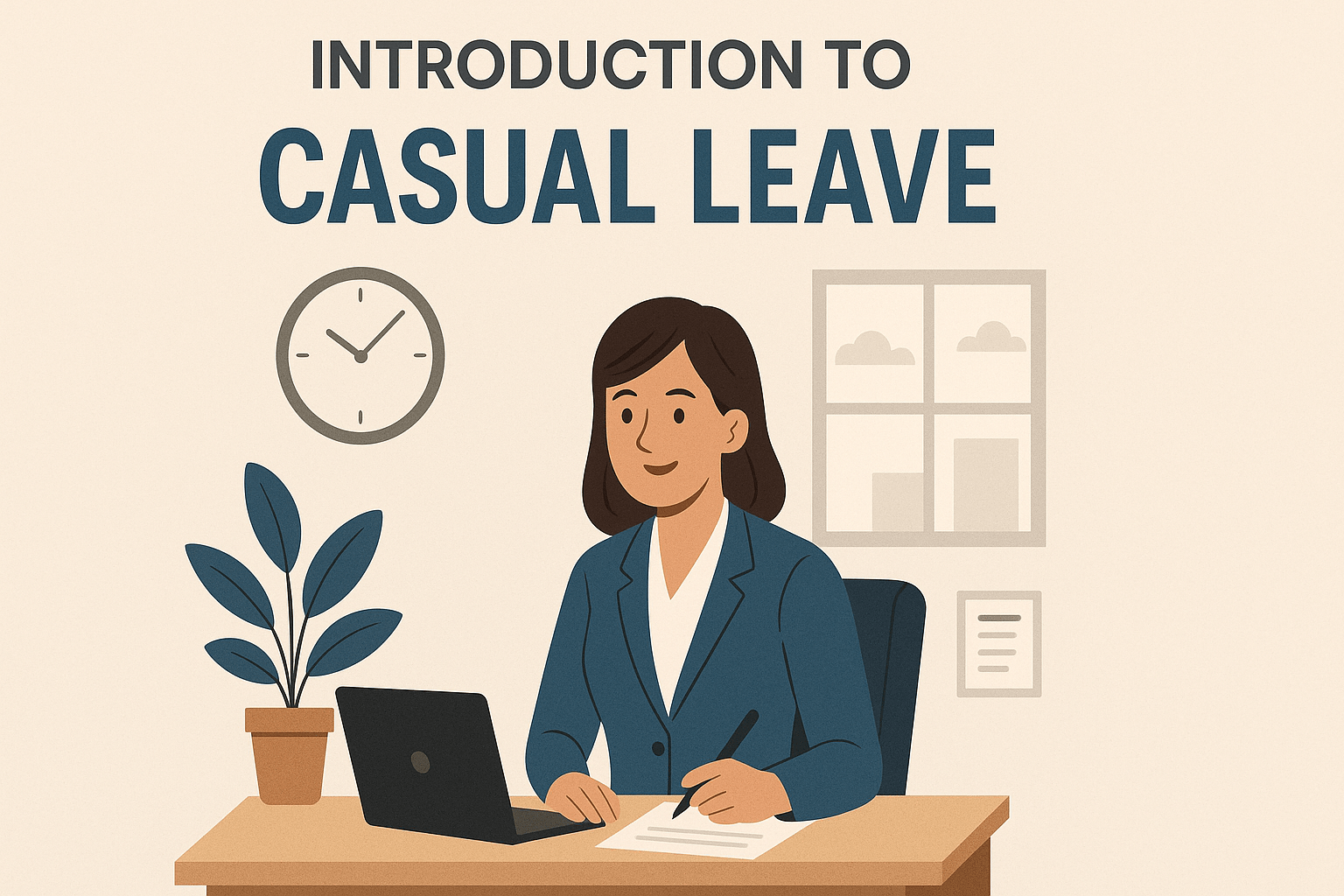Best practices for leave management can help reduce stress and conflict in a company is to manage to leave effectively. Employees unhappy with the annual leave they receive often make their dissatisfaction known, either directly or through reduced performance levels, leading to tension and conflict among co-workers. Additionally, absenteeism costs UK businesses £100 billion per year, highlighting the financial impact of ineffective leave management and the need for an effective absence management strategy to track and measure employee absences effectively. The average employee in the UK lost 7.8 days to sickness in 2023, further emphasizing the need for effective absence management strategies.
Here are 5 to consider: A positive workplace culture reduces unplanned absences, making it an essential component of effective leave management. Providing employee wellbeing programs can reduce overall employee absence rates, contributing to a healthier and more engaged workforce.
#1– Establish a policy, and make it mandatory. Employees who feel their rights to leave are not secure may take as much leave as possible to ensure they are not penalised for it. If employees know what the policy is and their rights are protected, there is less scope for conflict.
While many companies have a standard policy, some may require more leave or less. If this is the case, it should be made clear to employees, and they should understand why the policy has been selected such as adhering to the industry best practices. Benign intent is essential – employees must feel that their company is looking out for their well-being, not just trying to control them. Research by the Department for Work and Pensions indicates that the majority of employers agree there is a link between work and employee health and wellbeing, further emphasizing the importance of thoughtful leave policies.
#2– Communicate the policy to employees. Employees should be aware of the leave policy and it’s application- to the extent that there is no confusion about who is entitled to what type of leave and when it can be taken.
Employees who have been with the company for a long time may be unaware of recent changes to leave entitlements, so the company should inform them about the recent amendments. This is particularly important if an employee has been taking more leave than they are entitled to, for example, by using sick leave as if it were annual leave.
#3– Ensure all employees know what constitutes leave and how to record it. There should be no ambiguity about the types of leave available, and employees need to know their entitlements. Measuring absence requires effective record keeping to accurately track and identify trends, which can help in refining leave policies.
Ideally, employees should view their leave balances online whenever they want. This way, any problems in managing leave are resolved quickly and without conflict.
#4– Make sure managers know the policy and apply it fairly. If some employees are favoured over others, the policy will fail. Managers must be given clear instructions about using the policy and must be held accountable for doing so. Investing in manager training improves absence management effectiveness, ensuring policies are applied consistently and fairly.
#5– Ensure employees’ responsibilities are taken into account when applying the policy. For example, an employee on leave may still be required to do some work, which needs to be taken into account when the policy is applied. Implementing flexible working options can assist employees in managing their responsibilities and help reduce unplanned absences. Employees with more flexible working arrangements report higher levels of engagement and reduced cases of burnout, making flexibility a key factor in effective leave management.
Employees who take leave without letting their supervisor know may be perceived as disloyal or uncommitted. While it is better to give more notice than less, some unforeseen circumstances (e.g. illness or family emergencies) may prevent employees from doing so. Managers should take this into account when applying the policy. Conducting return-to-work interviews is a key strategy for managing employee absences effectively and supports the reintegration process.
Understanding Absence Management
Absence management is a critical aspect of human resources management that involves tracking, managing, and reducing employee absences. Effective absence management strategies can help organizations minimize the negative impact of absences on productivity, employee morale, and overall business performance. Understanding the different types of absences, including scheduled and unscheduled leaves, is essential for developing strategies to manage and mitigate their impact.
Organizations should have a clear absence policy that outlines the procedures for reporting an employee’s absence, managing leave, and providing support to employees. This policy should be communicated effectively to ensure all employees understand their responsibilities and entitlements. Effective absence management requires a proactive approach, including regular communication with employees, monitoring absence data, and providing support to employees with mental health issues. By implementing these strategies, organizations can create a more supportive and productive work environment.
Assessing the Cost of Employee Absences
Assessing the cost of employee absences is crucial for effective absence management. The financial impact of absences can be significant, with the average UK business losing around 7.8 days per employee to sickness each year. These costs can be broken down into direct and indirect expenses.
Direct costs include the wages paid to employees while they are absent, as well as the expenses incurred from hiring temporary staff or paying overtime to cover the workload. Indirect costs, on the other hand, encompass the loss of productivity, reduced employee morale, and decreased customer satisfaction that can result from frequent absences.
Understanding these costs is essential for developing strategies to manage employee absences effectively. By assessing the financial impact, organizations can identify areas where improvements can be made and implement measures to reduce the overall cost of absences.
Invest in an Absence Management System
The best way to ensure a company’s leave management policy is followed and that employees can apply for leave online is to establish clear absence policies and invest in a leave management system. This will automate the process, making it easier for employees to apply for leave and managers to approve or decline leave requests.
Employees should also be informed about their rights regarding statutory sick pay and the processes for reporting absences. A leave management system will also ensure that employees know their leave entitlements and that the policy is applied fairly to all. It will also ensure employees know what tasks they need to complete while on leave and what tasks can be done by other staff members.
Managers will have a better overview of employee leave and plan staff rosters accordingly. This will help to ensure that work is not disrupted when an employee is on leave. A supportive workplace culture is essential for motivating employees to return to work after an absence, ensuring a smoother transition and maintaining productivity.
A well-implemented system to manage absence will reduce stress and increase productivity, as there will be no risk of an employee taking more holiday than they are entitled to or of work piling up while they are away.
Leave management is an integral part of any company and should be based on best practices. By investing in a system to manage leave, companies can ensure that employees feel secure with their leave entitlements and apply for the days they need.
Implementing Absence Policies and Procedures
Implementing clear and comprehensive absence policies and procedures is essential for effective absence management. These policies should outline the procedures for reporting absences, including who employees need to notify and the timeframe for doing so. Clear guidelines help ensure that all employees understand their responsibilities and the steps they need to take when they are unable to work.
Additionally, absence policies should address the consequences of excessive absences, including potential disciplinary actions. This helps set expectations and encourages employees to adhere to the policy. Procedures for managing sickness absence, such as conducting return-to-work interviews and requiring medical certificates, should also be included.
Effective communication of these policies is crucial. All employees should be aware of the absence policies and procedures, ensuring there is no confusion about what is expected of them. By implementing and clearly communicating these policies, organizations can manage absences more effectively and maintain a productive work environment.
Promoting a Healthy Work Environment and Mental Health
Promoting a healthy work environment is essential for reducing employee absences and improving overall well-being. Organizations can achieve this by providing wellness programs, ergonomic workspaces, and flexible work arrangements. These initiatives not only support employees’ physical health but also contribute to their mental well-being.
Encouraging open communication and providing support to employees with mental health issues can significantly reduce absences, which is a crucial aspect of managing absence. Organizations should prioritize employee well-being and offer resources to support both physical and mental health. A healthy work environment leads to increased productivity, improved employee morale, and reduced turnover, making it a key factor in effective absence management.
Tracking and Recording Absences
Accurate tracking and recording of absences are fundamental components of effective absence management. By systematically recording absence data, organizations can identify patterns and trends in employee absences, which can inform HR decisions and help refine absence management strategies.
Absence data provides valuable insights into the frequency, duration, and types of absences occurring within the organization. This information can be used to develop targeted training and development programs, address underlying issues contributing to frequent absences, and evaluate the effectiveness of current absence management strategies.
Consistency in recording absence data is key. All absences should be documented accurately to ensure the data is reliable and useful for analysis. By maintaining detailed records, organizations can make informed decisions and implement strategies to reduce the impact of employee absences on productivity and overall business performance.
Managing Sickness Absence
Managing sickness absence is a critical aspect of effective absence management. Sickness absence can result from various factors, including physical illness, injury, and mental health issues. Employers should have robust procedures in place to manage these absences and support employees during their recovery.
One effective strategy is to conduct return-to-work interviews, which help understand the reasons for the absence and plan for the employee’s reintegration into the workplace. Requiring medical certificates for extended absences ensures that the absence is legitimate and allows employers to provide appropriate support.
Supporting employees who are absent due to sickness is essential. This can include providing access to occupational health services, offering flexible working arrangements, and addressing any workplace factors that may contribute to the employee’s absence. Monitoring and reviewing sickness absence data can help identify patterns and trends, enabling employers to take proactive measures to reduce the incidence of sickness absence.
By implementing these strategies, organizations can manage sickness absence more effectively, support employee well-being, and maintain a productive work environment.
Measuring and Evaluating Sickness Absence Management
Measuring and evaluating absence management is crucial for understanding the effectiveness of absence management strategies. Organizations can use absence management software to track and analyze absence data, including the frequency, duration, type of absences, and long term absences. This data provides valuable insights into patterns and trends, helping organizations refine their strategies.
The Bradford Factor is a commonly used formula to measure the impact of short-term absences on business productivity. By regularly reviewing and evaluating their absence management strategies, organizations can identify areas for improvement and ensure their approaches are effective. Ongoing monitoring and evaluation are essential to ensure that absence management strategies meet their intended goals and contribute to a more productive and engaged workforce.
The Bottom Line
As with any policy, the best way to ensure effectiveness is to review it regularly and make changes where necessary. By following these five best practices, companies can leave effectively and reduce the likelihood of conflict.




